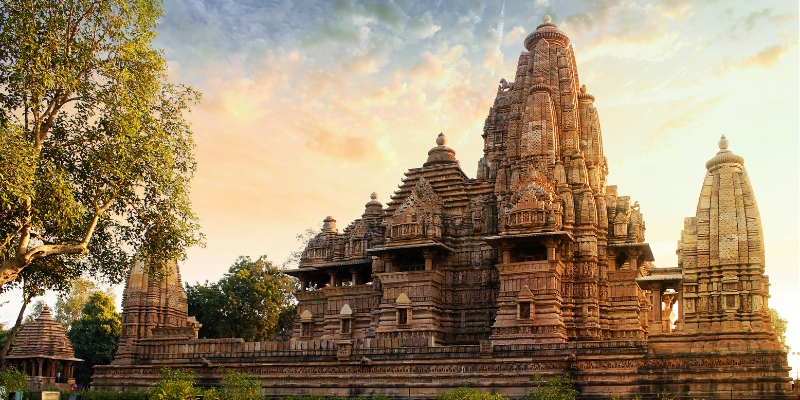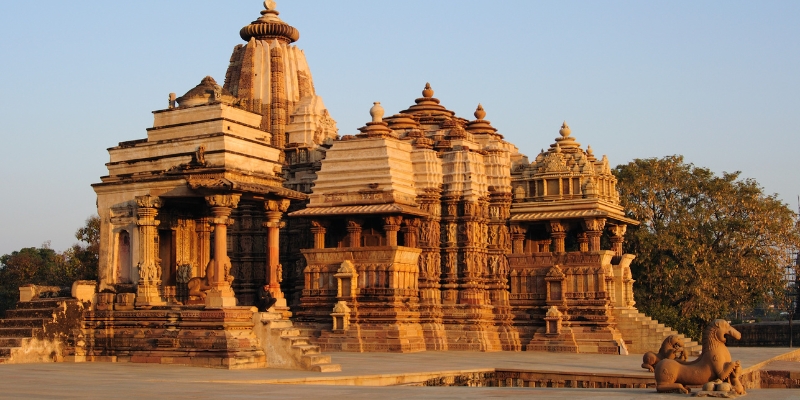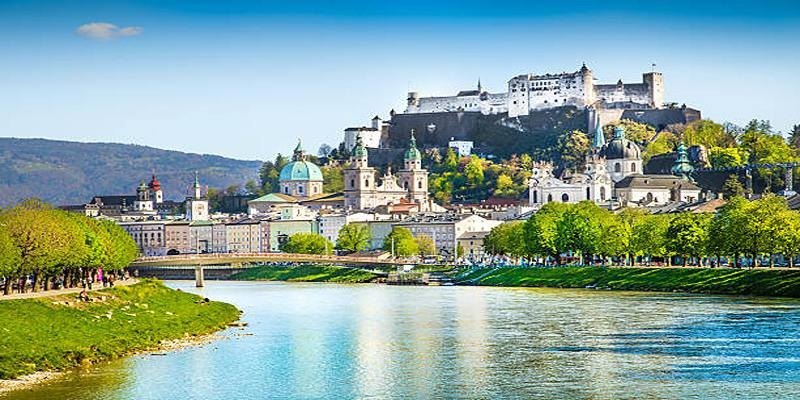Khajuraho, in Madhya Pradesh, is a symbol of India's cultural and architectural legacy. The intricately sculpted temples of this little hamlet are famous worldwide. Khajuraho's temples are a marvel of architecture, art, culture, and history. One may go back in time to see Chandela dynasty paintings at Khajuraho.
Art lovers, historians, and visitors visit Khajuraho because of its UNESCO World Heritage designation. Beyond the temples, Khajuraho gives a view into rural India's heart, where age-old customs and local kindness create a genuine and immersive travel experience.

Khajuraho: Historical and Cultural Legacy
In the mid of 9th and 13th centuries, the Chandela dynasty shaped Khajuraho's history. This time saw the construction of temples dedicated to Lord Shiva, Lord Vishnu, and the Jain Tirthankaras. The Chandela monarchs were art and architectural lovers and adherents of several religions. Thus, they built Hindu and Jain temples there.
Khajuraho displays old Indian art. The temples have intricate sculptures that reflect Hindu epics, Chandela life, and love and sensuality. Although erotically charged, these sculptures show ancient Indians' openness to human impulses. Khajuraho's temples celebrate India's rich history, blending art, culture, and religion.
How to Reach Khajuraho:
Travelers from around India can reach Khajuraho due to its good connectivity. Domestic flights from Delhi, Mumbai, and Varanasi arrive at Khajuraho Airport, the closest. Khajuraho's railway station connects Delhi and Varanasi. The town is linked by well-maintained national roads for easy driving.
Autorickshaws, cycle rickshaws, and rental automobiles may be utilized to tour Khajuraho and its attractions. The town is small, making walking simple. Travelers can easily navigate Khajuraho because of the excellent signs of temples and other monuments.
Best Time to Visit Khajuraho:
Visit Khajuraho in October–March for cooler weather. This season is perfect for temple and outdoor sightseeing due to its favorable weather. Travelers may pleasantly visit the town's historic sights and cultural activities in winter, escaping the Indian summer heat.
Cultural festivals are held in Khajuraho year-round. Traditional Indian dance genres are celebrated during the February Khajuraho Dance Festival. This event draws artists and fans from India and beyond. Plan your visit during this spectacular dance event for an unforgettable cultural experience. Popular events may draw many people, so plan for lodging and transportation.
Khajuraho Temples: Architectural Marvels
Khajuraho's temples are architectural marvels with exquisite patterns and sculptures that have endured. The Kandariya Mahadev Temple, a Shiva temple, is the most famous. The temple is tall and decorated with Hindu mythology, everyday life, and sensual sculptures. Walking around the Kandariya Mahadev Temple is like entering an encyclopedia of old Indian culture and art.
Khajuraho's Lakshmana Temple is another architectural marvel. It has artistically carved exteriors and gorgeous images of gods, goddesses, and heavenly. Historical and religious, the temple honors Lord Vishnu. The stone tales will capture you as you stroll its elaborate hallways and expansive courtyards.
Beyond these two significant temples, Khajuraho has several smaller temples with distinct designs and themes. The sun god Surya is shown in a chariot carried by seven horses at the Chitragupta Temple. The Parsvanath and other Jain temples show Khajuraho's architectural and artistic variety. Exploring these temples showcases centuries-old artistry and culture.

Beyond the Temples: Exploring Khajuraho
Beyond its temples, Khajuraho has more. Jain temples in the town are recognized for their tranquility. These temples provide spiritual and contemplative experiences because of their intricate architecture and quiet atmosphere. The Khajuraho Jain Museum explains the religion and its history.
Visitors may see Khajuraho's lively cultural performances. Traditional Indian dance and music are performed, letting visitors experience local culture. The natural marvel Raneh Falls outside town is well worth seeing. Stunning waterfalls across rugged terrain attract nature lovers and photographers.
Cultural Significance and Festivals:
Khajuraho's temples and history are vital to its culture. The town's temples represent India's creative and architectural talent. These temple sculptures have prompted thoughts on love, desire, and devotion, stressing human emotions and Indian sensuality. The Khajuraho Dance Festival celebrates traditional Indian dance every year. Top dancers and musicians nationwide perform during the event in front of the stunning temples. This festival promotes ancient Indian arts and fosters cultural understanding.
Khajuraho has other cultural events in addition to the dance festival. Holi is enthusiastically celebrated in Khajuraho. This joyful event is celebrated by residents and tourists, creating a lively and colorful ambiance. Diwali, the festival of lights, illuminates Khajuraho's temples and town, adding to its beauty. Khajuraho culture includes temple rites and ceremonies as well as festivals. Priests perform daily prayers and offerings, allowing visitors to experience Indian spirituality. The town's great cultural importance is seen in its awe and dedication.
Accommodations and Dining:
Khajuraho has accommodations for all tastes and budgets. Many hotels, resorts, and guesthouses provide pleasant and convenient accommodations. Some of these hotels are constructed to match Khajuraho's architecture so that tourists may enjoy the town's splendor.
Dining in Khajuraho is fun. Numerous restaurants provide Indian and international dishes throughout the town. Travelers may enjoy Indian, regional, and international cuisine. The highlight of eating is sampling real Madhya Pradesh food. Daal bafla, keema, and poha provide a taste of the area. Some restaurants' open courtyards provide a remarkable eating experience.
Reserve for yourself in advance, particularly during busy tourist seasons. Khajuraho's eating choices are varied and enjoyable, whether you dine at a local restaurant or your hotel.
Practical Tips for Travelers:
Practical recommendations for Khajuraho visitors might improve their experience. The temples require modest attire, including covering shoulders and legs. Wear easy-to-remove shoes, as temple visitors must remove them.
Khajuraho's temples allow photography. However, visitors must respect others' privacy and not take photos without permission. Respectful distance and priestly instruction are desired while observing rites or rituals. Opening up to local culture and traditions with respect may lead to more meaningful encounters and a greater understanding of the site's importance.
Like many Indian historical and cultural sites, Khajuraho may grow busy during peak tourist seasons. Travelers may expect busy streets and many guests. Patience and appreciation of the dynamic environment might improve travel.
Conclusion:
Khajuraho is a unique place where history, culture, art, and architecture combine to enhance tourism. Its historical and architectural wonders, cultural relevance, and yearly festivals showcase India's rich past. It's simpler to visit Khajuraho now that this article has covered how to get there, when, and practical recommendations.
Visit Khajuraho to see India's artistic and cultural riches and travel through time. Temples and cultural activities provide a unique glimpse into the region's rich cultural past. Visitors become part of the continuous tale of preservation and protection as they immerse themselves in Khajuraho's splendor, guaranteeing that this legacy will inspire future generations.





